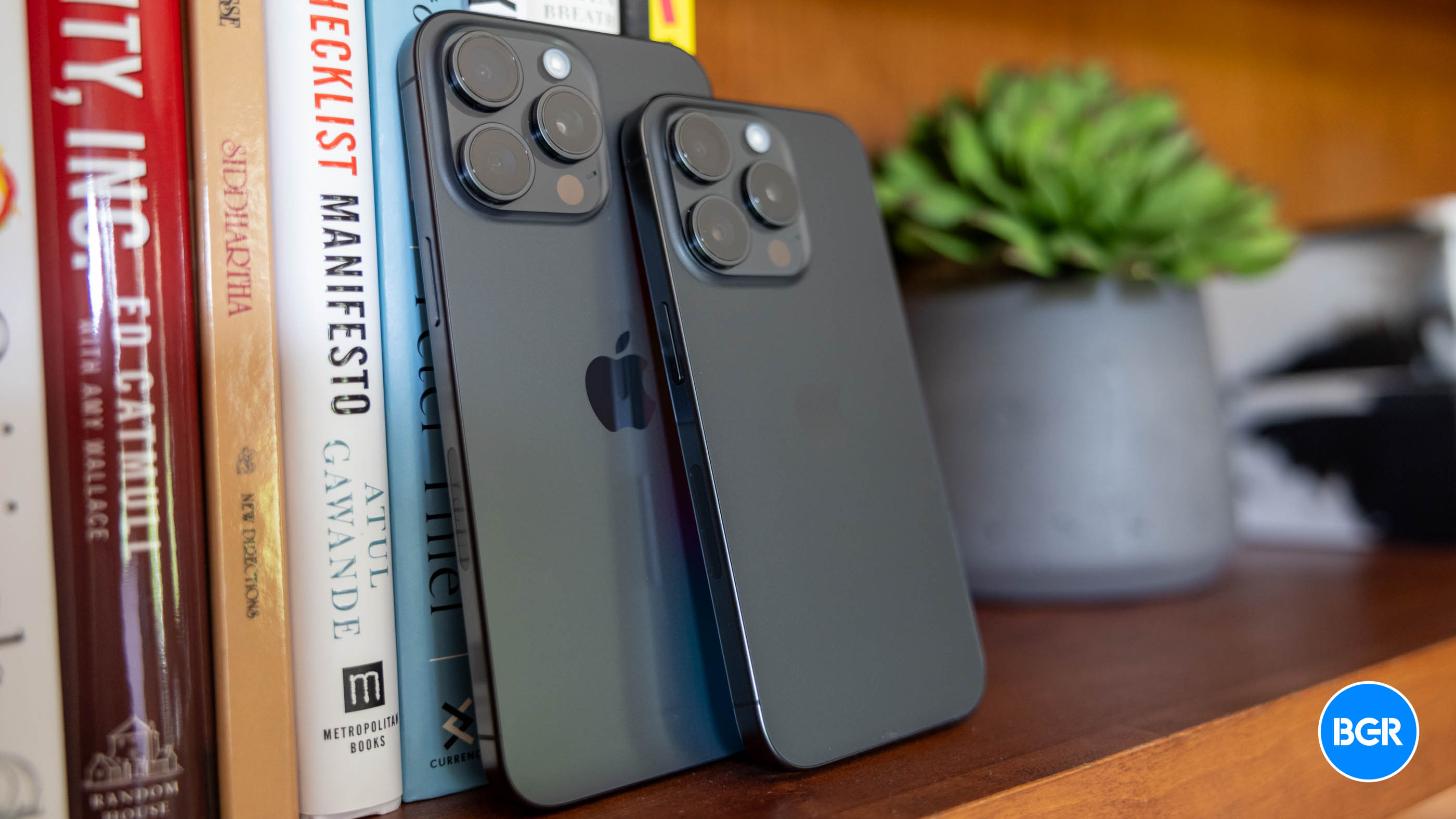The iPhone 16 series might include a big design change compared to previous versions. The entry-level iPhone 16 and 16 Plus models will come in the same 6.1-inch and 6.7-inch sizes as their predecessors. Bu tthe iPhone 16 Pro and 16 Pro Max will have 6.3-inch and 6.9-inch displays. That is, if all the recent reports about Apple’s 2024 plans for the iPhone are accurate.
Meanwhile, a new report claims Samsung is thinking about going in the opposite direction with the Galaxy S Ultra flagship. It won’t happen with the Galaxy S24 Ultra, however. Instead, these might be long-term plans for Samsung. The first smaller Galaxy S Ultra might arrive after 2025.
The point of the smaller Ultra is to compete with the iPhone Pro size. But, strangely enough, all iPhones might be larger than they are now by the time this Ultra arrives. Apple’s 6.3-inch and 6.9-inch screens might come to the non-Pro models after the iPhone 16 generation.
If all these reports come true, we’re coming full circle here. Apple defended its small iPhones for years before releasing larger iPhone 6 versions in 2014.
As for Samsung, the Korean giant is always quick to remind you that the Galaxy Note made phablets popular, forcing Apple to copy the design. Samsung conveniently forgets that others made Note-sized Android phones before the first Galaxy Note came to market.
Of course, it was indeed the Note that made these bigger devices popular. And then Samsung folded the Note into the Galaxy S Ultra series, once screen size was no longer an advantage for the former.

Why is Apple going larger?
Apple stuck with the 6.1-inch and 6.7-inch iPhone sizes for a few years now, so the switch to larger displays might seem surprising. But reports say that Apple wants to bring the iPhone 15 Pro Max’s tetraprism zoom lens to the smaller handset next year. To do that, it needs more space internally, so increasing the size of the iPhone is the way to go.
But you can’t only increase the size of the iPhone 16 Pro. Do that, and a 6.7-inch iPhone 16 Pro Max is no longer that big by comparison. So the next-gen Max will get its own size upgrade. That will help Apple improve battery life on the iPhone 16 Pro Max, at least in theory.
Another reason to launch a larger iPhone Pro Max model is to better compete against the larger Galaxy S Ultra. The Galaxy S24 Ultra should have a 6.8-inch screen, like its predecessor.
Samsung already has a smaller Galaxy S phone
Every Galaxy S generation features three devices. We have the base Galaxy S model, the Galaxy S Plus, and the Galaxy S Ultra. Unlike the iPhones, the same-year Galaxy S models do not feature the same design. The Galaxy S and Galaxy S Plus look more like the iPhone. Take the Galaxy S23 series. The regular model and the S23 Plus have flat screens, flat edges, and rounded corners.
The Galaxy S Ultra comes with curved side edges and flat top and bottom edges. That’s because it features a built-in stylus. The S Pen is also a distinctive design detail, as the Ultra is the only Galaxy S version that gets one.
That’s to say that the cheaper Galaxy S24 and Galaxy S24 Plus will be direct rivals of the iPhone 16 Pros. But they won’t feature that built-in stylus.

Does a smaller Galaxy S Ultra make sense?
Rumors from Korea that leaker Revegnus picked up say that Samsung is looking at reimagining the Galaxy S design after the Galaxy S25 series. That’s where the smaller Galaxy S Ultra comes from:
There is specific consideration to add a model to the existing FE lineup with enhanced performance, similar to the iPhone Pro. (Possibly a smaller Galaxy S Ultra?)
By 2026, all iPhones should adopt the 6.3-inch and 6.9-inch screen sizes. A smaller Galaxy S Ultra would have to feature a design that’s 6.3-inch or smaller. If Samsung’s plan is to compete against the iPhone Pro better, that is. For comparison purposes, the Galaxy S23 Plus features a 6.6-inch screen.
It’s too early to try to guess what Samsung will do beyond 2025. Even if these discussions are real, there’s plenty of time for Samsung to make a decision.
I will say that launching a smaller phone with a built-in stylus might not be the greatest of ideas. The S Pen eats up internal space that can used to improve battery life. Sure, by 2026, we’ll get 2nm chips that should be even more efficient. But the battery size compromise remains.
What’s certain is that Samsung should unveil the Galaxy S24 series in early 2024 and make a big deal about the phone’s AI feature. That might be a more important development for the Galaxy S line than any design changes Samsung might be looking for.








